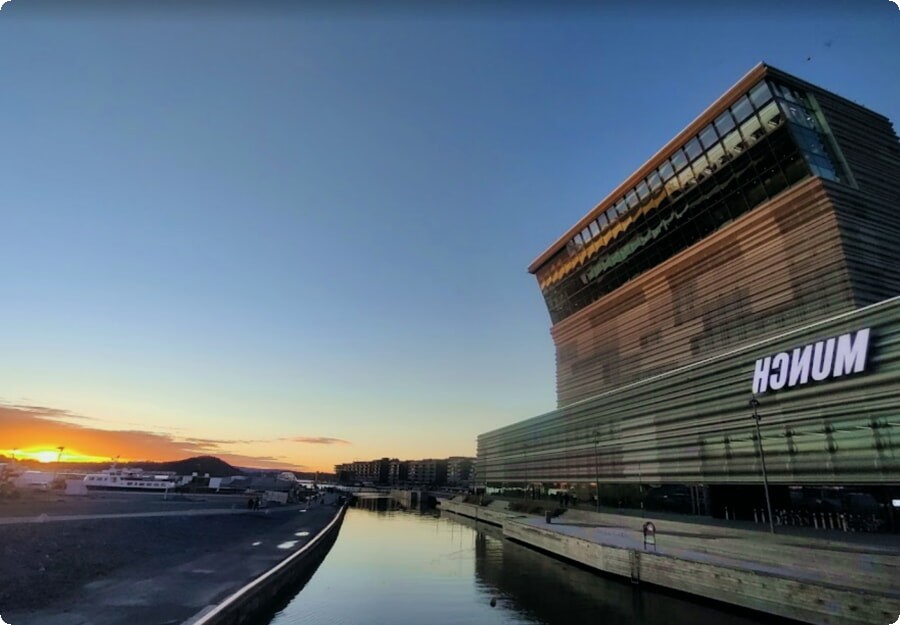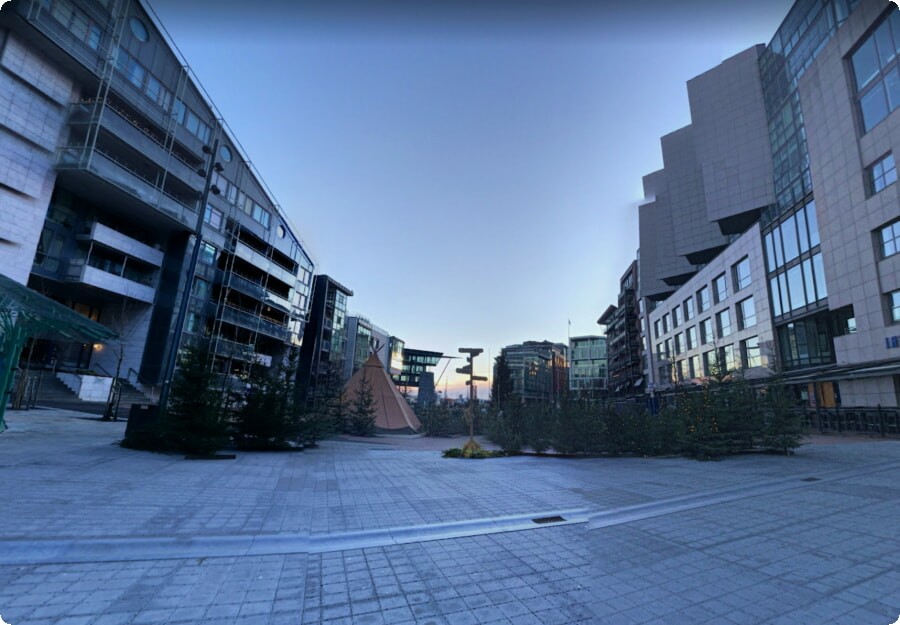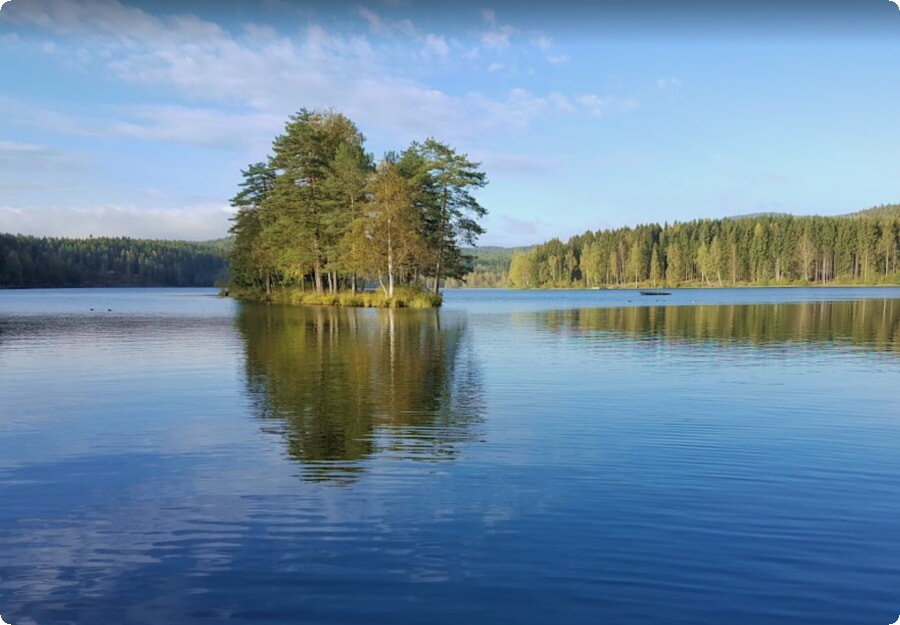5 Reasons to Travel to Oslo
Often overlooked by travelers, Oslo is one of the most beautiful and accessible cities in Europe. With a fjord and islands in the center, it’s surrounded by nature and boasts tons of things to do - including museums, spacious parks, and delicious restaurants.
If you're an art fan, you won't want to miss the Munch Museum or Astrup Fearnley Museum of Modern Art. You'll also find plenty of unique historical sites and architecture here.
1. The Munch Museum
The Munch Museum is one of the main attractions in Oslo, and it’s well worth a visit. It’s home to the world’s largest collection of works by Edvard Munch, who lived in Norway between 1863 and 1944. The painter left a huge bequest to the city of Oslo that included 1,150 paintings, 7,500 drawings, 18,000 graphics plus a wealth of personal items.
The museum has 13 floors of galleries that are spread over a large space. It’s a great way to see the range of different works that Munch produced, and the variety of techniques that he used.
In addition to the artworks, there is also an area where you can watch video clips about Munch’s life and work. This is a great way to get more insight into the life and career of this famous artist, and it’s a fun experience that will make you appreciate his paintings even more.
Another great feature of the museum is that it has a large amount of artwork by contemporary artists, so you can see how they have been influenced by Munch’s style. For example, Tracey Emin has a whole room dedicated to her work that is based on Munch’s paintings, and you can see how her paintings have changed over time.
It’s also interesting to see how many different artists are using the same motif, and how each of them brings their own personality to it. This will give you a good idea of the way that modern art has evolved over time and how it can be adapted to suit the current trends in the market.
The new Munch Museum was designed by Spanish architect Juan Herreros, and it’s the result of a competition that was held in 2008. He’s created a tower-shaped building, where all of the main functions are organised vertically. The structure has a distinctive crooked glass section that’s meant to transform it into a landmark for the area. The building was designed to be sustainable, and recycled materials and energy-saving technology were used where possible to help reduce the overall carbon footprint of the scheme.
Tourists consider renting a car one of the best ways to enjoy all that Norway has to offer. Renting an economy class car in Bergen airport will cost about 17 euros per day, in Oslo - about 16 euros per day.

2. The Botanical Garden
The University of Oslo’s Botanical Garden (Universitetets Botaniske hage) is one of the most interesting places to visit in Oslo. The 150 hectares of the garden are filled with plants from around the world. The garden has an arboretum, a zone with medicinal plants and spices, and a rock garden showing the flora of mountain areas. It also has large greenhouses that are full of exotic plants from all over the world.
The best time to visit the Botanical Garden is during spring and summer, when the flowers are blooming in all their glory. The gardens also have a great variety of sculptures, artificial waterfalls and water ponds.
Whether you are a plant lover or not, the Botanical Garden is an enjoyable place to spend some time. It is centrally located, and can easily be accessed by public transport. The entrance is free and there are plenty of things to see in the gardens.
Visitors can find out more about Norway’s rich natural history and the different species that make up the country. The natural history museum contains the Geological Museum and the Zoological Museum, both of which are renowned for their impressive collections of minerals, dinosaur skeletons, and other fascinating items.
If you want to take a stroll in the city, you can also visit one of Oslo’s many parks and green spaces. Frogner Park, for example, has a number of popular attractions and is one of the most visited places in the city.
The Vigeland Sculpture Park is another famous attraction in Oslo. It is open year-round and features 650 sculptures by famed Norwegian artist Gustav Vigeland.
A trip to Oslo should not be without visiting the city’s largest landmark, the opulent City Hall (Radhuset). This imposing square building is home to 38 bells that chime every hour of the day.
You can also learn about Norway’s rich history by visiting the city’s Historical Museum. The museum’s collections of Egyptian artifacts and medieval items are extensive. Its Medieval Gallery is especially interesting, with many rare and impressive objects on display.
The best way to save money on admission fees is by purchasing the Oslo City Pass. The card offers admission to a huge range of museums and other attractions, as well as unlimited use of public transport. It’s a great idea for tourists who are staying in the city for several days and would like to explore more of Oslo’s highlights.

3. Aker Brygge
Aker Brygge is one of Oslo's most popular attractions, with many locals and tourists visiting to shop, dine, and take in the stunning waterfront views. It's also a popular place to start a ferry ride to the small islands and communities that make up Oslofjord.
The boardwalk and pier in Aker Brygge are home to a number of top-notch restaurants, all serving delicious Norwegian fare. This area is especially popular during the summer, when you can enjoy a meal at one of the many al fresco eateries along the water's edge.
As well as shopping and dining, you'll find a lot of cultural attractions in Aker Brygge. There's the City Hall (Radhuset), which has a beautiful interior lined with murals by Norwegian artists, and the Nobel Peace Centre, which showcases exhibitions about peace and conflict.
You can also visit the Astrup Fearnley Museum, which is packed with historic viking ships from the 11th century. This is a must-visit for anyone looking to learn more about Norway's rich history.
When you're in Oslo, it's worth taking a stroll through the city's principal street: Karl Johans gate. This is a bustling street that's lined with shops, restaurants and cafes, as well as the Royal Palace of Norway. The street also has a Christmas market that transforms it into a festive event.
Another must-see in Oslo is the Church of Our Saviour. This magnificent building dates back to 1697 and is renowned for its baroque interior. You'll love the stained glass windows, altar piece and organ front with acanthus carvings.
If you're looking for something more calming and peaceful, try the Botanical Garden, which is full of lush gardens, waterfalls, and ponds. This is the perfect place to take a break from exploring the city and relax with a drink or meal.
Finally, Aker Brygge is also home to the Nationaltheatre, which has stunning views over Oslo and the fjord. You can catch a live performance here, or visit the nearby Astrup Fearnley Museum for a chance to see some of Norway's most treasured pieces of art.

4. Sognsvann Lake
Located on the far north of Oslo, Sognsvann Lake is a popular day-out for residents and visitors alike. During the summer, it offers opportunities to sunbathe and swim in its crystal-clear waters. In winter, it becomes a natural ice rink that attracts skaters of all ages.
Easily accessible from the city centre, Sognsvann Lake is ideal for a quick dose of nature. The lake is surrounded by green forests and is popular for walking, running, cycling, jogging, paddleboarding and swimming.
The lake is also home to a number of attractions including a picnic area and a volleyball court. During the warmer months, it is a popular spot for families to spend time together, while in winter it attracts skiers and ice skaters.
It is free to walk around the lake and there is plenty of parking space available. You can also rent a sled to enjoy the snowy landscape.
Sognsvann Lake is one of the most popular spots for outdoor activities in Oslo, and with good reason. The lake is just a short trip from the city centre and is surrounded by a beautiful Norwegian forest.
During the summer, Sognsvann Lake is an ideal place for a picnic or to play volleyball in its sand court. The lake is free to use and there are a number of things to do here, from fishing to swimming and sunbathing.

Another great attraction at Sognsvann Lake is the Viking Ship Museum. It contains collections of the world's best-preserved Viking ships. The museum is well worth a visit if you're interested in Norway's Viking history.
Finally, the Fram Museum is a must-visit for anyone interested in polar exploration. It is home to the world's strongest polar vessel, the Fram. The museum also features a fascinating exhibition about Polar history.
With a vibrant city atmosphere, beautiful natural beauty and plenty of attractions to explore, you'll be spoilt for choice when planning your itinerary for a visit to Oslo. If you're looking for the ultimate Oslo experience, why not consider a fjord cruise through the enchanting 107-km long Oslofjord?